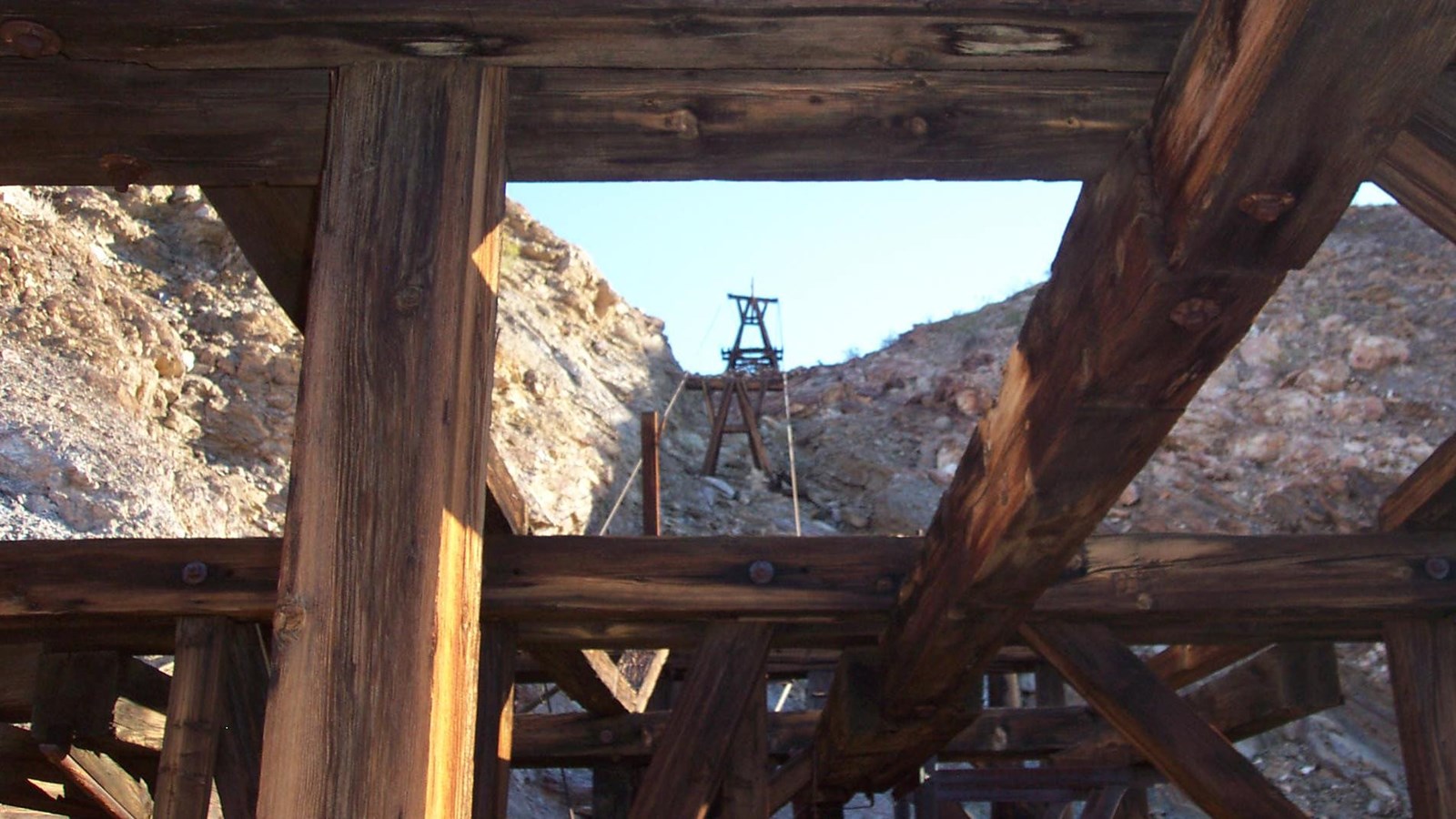Last updated: October 10, 2024
Place
Keane Wonder Mine

NPS
Quick Facts
Location:
Death Valley National Park
Significance:
Historic Gold Mine
Amenities
4 listed
Historical/Interpretive Information/Exhibits, Parking - Auto, Scenic View/Photo Spot, Trailhead
Gold ore soared over rugged desert ravines, safely nestled in the metal buckets of Keane Wonder Mine’s aerial tramway.
Although Death Valley is most famous for white gold (borax), real gold was mined in the area as well. Discovered by accident in 1903 by Jack Keane and Domingo Etcharren, Keane Wonder Mine and the surrounding area was mined intermittently until 1942, with heyday years of 1907-1912. Unlike many Death Valley claims which drew much excitement but yielded little actual revenue, Keane Wonder Mine produced $625,000-$682,000 worth of gold during its boom years.
Part of what made Keane Wonder Mine so successful was the ingenious aerial tramway which was built to transport gold ore from the mine to the mill. The tramway included two terminals and thirteen towers, with cables spanning deep ravines and an overall vertical fall of 1,500 feet (457 m). Metal ore buckets were loaded at the top (approximately 70 tons of ore was transported each day!) and moved down the cables to the mill, a mile (1.6 km) away.
Many of the original structures have been stabilized and repaired, and visitors to the site can spend several minutes to an entire day exploring the area. The impressive timbers of the lower terminal and mill are a short walk from the parking area, and a strenuous climb along an unmaintained trail (approximately 0.3 mi/0.5 km) will bring hikers to the base of a tramway tower with views of a ravine with historic ore buckets at the bottom. More serious adventurers can climb the entire steep 1.6 miles (2.6 km) to the upper terminal of the tramway and the mine itself.
The parking area is reached via a 2.8 mi (4.5 km) dirt road accessible to most vehicles (check for current conditions at the Visitor Center as washouts can occur) off the Beatty Cut Off Road. When visiting, please respect the history of this incredible site by not climbing on any of the structures or entering any of the mine openings. While many of the mine openings have been closed for visitor safety and are now the homes of native bats, some openings and metal debris still exist, so use caution when exploring.
